Search
Search Results
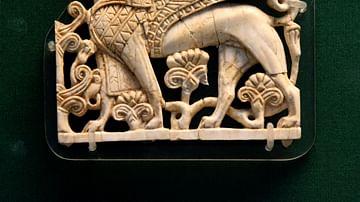
Article
The Nimrud Ivories: Their Discovery & History
In 1845 CE, the archaeologist Austen Henry Layard began excavations at the ruins of the city of Nimrud in the region which is northern Iraq in the present day. Layard's expedition was part of a larger movement at the time to uncover ancient...
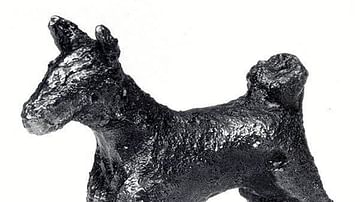
Article
The Nimrud Dogs
The Nimrud Dogs, five canine figurines found at the ancient Mesopotamian city of Nimrud, were only a few of the many startling finds in the region during the 19th century when expeditions were sent to corroborate biblical narratives through...
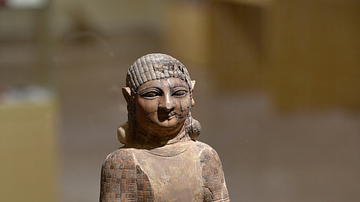
Image
Ivory Statue from Nimrud at the Iraq Museum
This carved ivory statue was made of different ivory pieces, which were joined together. The legs are now missing. It depicts an adult Assyrian beardless male figure. He stands in a gesture of worship. It was found (by an Iraqi team in the...
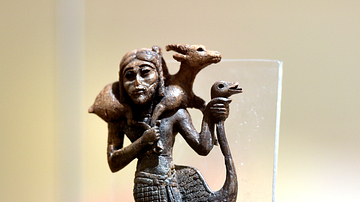
Image
Ivory Figure of Syrian Man with an Ostrich & Goat, Nimrud
This burned ivory figure, carved in the round, depicts a male figure carrying a goat on his shoulders and holding an ostrich by the neck. The depiction is very realistic; the beak of the ostrich is opened and the front wing is held upwards...

Image
Cow & Calf Ivory Motif from Nimrud
This is one of the finest examples of the so-called "cow-and-calf" motif and is the only known to date to have been carved in the distinctive style of the "Ornate Group". On the right, a cow stands and turns her head toward her suckling calf...
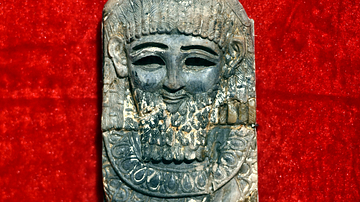
Image
Ivory Sphinx from Nimrud
This ivory plaque is virtually complete but burnt (partly black and partly grey). It depicts the bearded head and forequarters of a sphinx, advancing left with head turned outwards. This is one of the rare examples of the combination of Syrian...
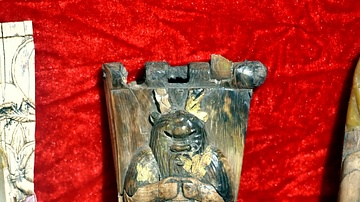
Image
Ivory Horse Frontlet from Nimrud
This ivory piece is part of the so-called "equestrian bridle-harness ornaments". It represents the lower part of a hinged frontlet, virtually complete. Most of the hinges and much of the iron pin have survived. A figure of the Egyptian...
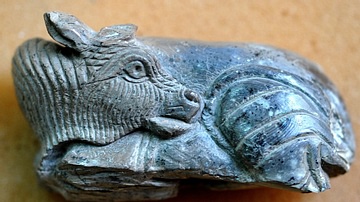
Image
Nimrud Ivory Supine Bull
An exquisitely carved plaque of a supine bull. Note the black burn mark. Probably, this was part of a group which once supported an ivory tray. Neo-Assyrian period, 9th-7th centuries BCE. From Nimrud, Mesopotamia, Iraq. (The Sulaimaniya Museum...
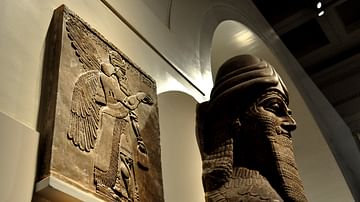
Article
Wall Reliefs: Apkallus of the North-West Palace at Nimrud
Religion is the sigh of the oppressed creature, the heart of a heartless world, and the soul of soulless conditions. It is the opium of the people. (Karl Marx, Critique of Hegel's Philosophy of Right). When it comes to religion...
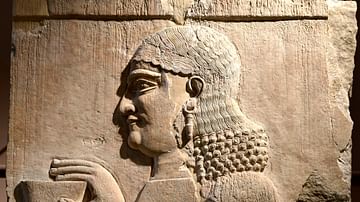
Article
The Iraq Museum: A Brightness in the Darkness
For whom have I labored? For whom have I journeyed? For whom have I suffered? I have gained absolutely nothing for myself, I have only profited the snake, the ground lion! The Epic of Gilgamesh, Tablet XI This is how...